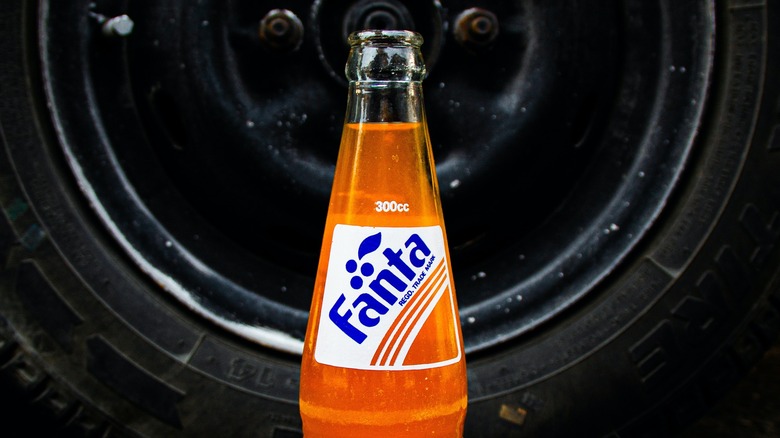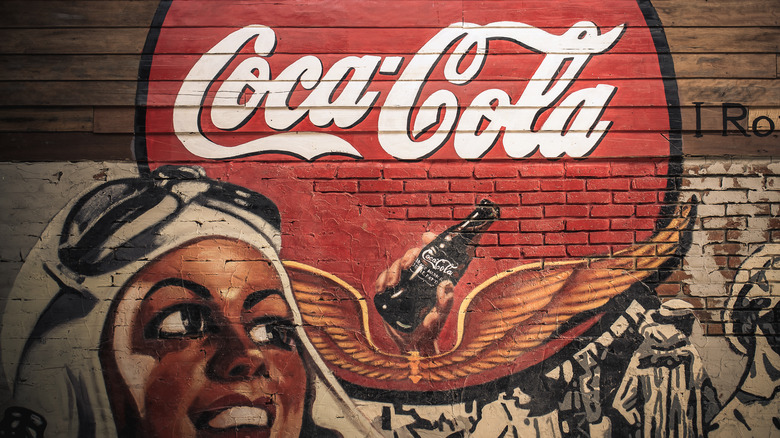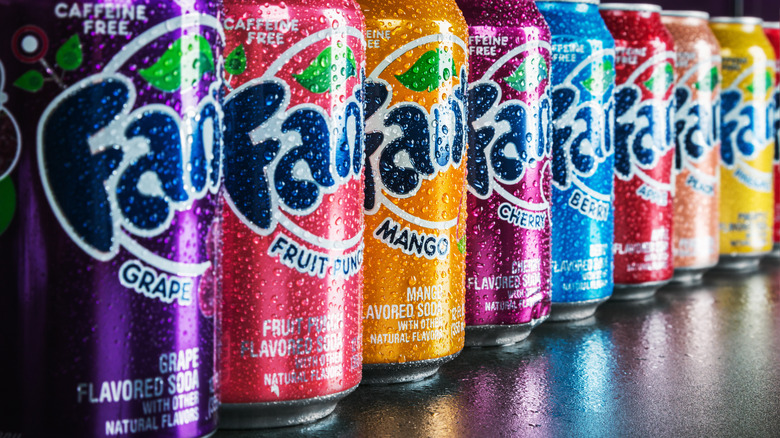Why Coca Cola Invented Fanta During World War II
The first Coca-Cola was served at a pharmacy in Atlanta, Georgia in 1886 (via Coca-Cola), and it didn't take long for it to become the most popular beverage in the world. By the time the United States entered the war in Europe in 1941, Coca-Cola was as American as apple pie, using jingles in their advertising to help the brand get heavily embedded in U.S. culture.
During World War II, the importance of getting the beloved soda to troops stationed overseas wasn't lost to the United States military, who put systems in place to do everything they could to ensure its soldiers were never without the refreshing beverage (via American GI Museum). According to The Coca-Cola Company, the company's president made a vow "to see that every man in uniform gets a bottle of Coca-Cola for 5 cents, wherever he is and whatever it costs the Company."
But what about the Germans?
Necessity breeds invention
Due to embargos and transportation problems, the ingredients used in the production of Coca-Cola were prevented from reaching behind the lines of war, and the world's favorite carbonated concoction couldn't be produced within Germany, leaving a big hole in German society (per Atlas Obscura). The Germans loved Coke just as much as the Americans did.
At that time, Max Keith was in charge of Coca-Cola's German operations, and his ingenuity and resourcefulness were about to be tested. Keith and his team worked with whatever they had available in war-torn Europe. He told his staff to put their imagination — fantasies in German — to work to create a new beverage, and in 1940, Fanta was born. Beet sugar was used to sweeten it, and fruit scraps gave it flavor. The whey left over from cheese-making went into the recipe, and while whey in a fizzy beverage doesn't sound very appetizing, Fanta rose in popularity nonetheless.
In 1955, the Italians came up with a recipe made with local citrus that we might recognize today — the iconic orange Fanta.
The dark side of Fanta's history
Fanta's unconventional success story isn't without its dark side. According to Snack History, Max Keith wasted no time marketing his new soft drink to the Nazis, and it wasn't long before it was Germany's new official drink despite the reports of forced labor being used to produce it. Fanta's questionable reputation continued into the 21st century prompting Coca-Cola to release a statement in 2015 denying its association with Hitler and the Nazis.
Today, Fanta is available in 188 countries worldwide (via Facebook) and in a myriad of flavors. High fructose corn syrup is used as a sweetener in the Fanta sold in the United States, but many other countries use sugar to sweeten the drink. Internationally, you can find it in unique flavors such as dragonfruit, kolita in Costa Rica, and one in Japan that tastes like salty watermelon.
Fanta has come a long way in its 75-plus-year history and today's Fanta has none of the dubious ingredients of the original: no scraps, no beet sugar, and no whey.


